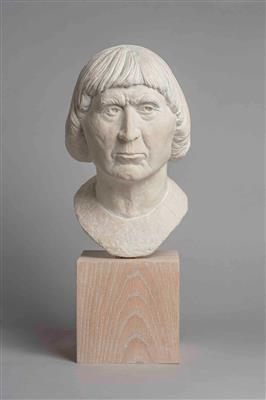Robert the Bruce
Download media
Object number21365
TitleRobert the Bruce
Creator Christian Corbet
DescriptionRobert the Bruce: in our mind’s eye we picture the warrior king from the romanticised images that appear in paintings, on banknotes and in films. Now, just over 700 years after his most famous victory at Bannockburn in 1314, we have the chance to see what one of Scotland’s national heroes really looked like.
In the last years of his life, Robert the Bruce suffered from ill health; when he died his body was buried in Dunfermline Abbey, but his heart was removed on his instructions to be taken by Sir James Douglas to the Holy Lands. Douglas was killed fighting in Spain, but Bruce’s heart was recovered and brought back for burial at Melrose Abbey.
Once feared lost, the royal tomb was unearthed by workmen in 1818 when preparing the foundations for the new Abbey Church in Dunfermline. The remains were examined by Robert Liston, an Edinburgh surgeon, who identified the king from compelling evidence: the breastbone had been sawn away so that the heart could be removed. A cast of the skull was made by the sculptor, William Scoular. Robert the Bruce was safely returned to his resting place at Dunfermline Abbey in 1819.
In 2014 Canadian sculptor Christian Corbet embarked upon a three-year project to capture Bruce’s likeness, supported by his descendants and using an original cast taken from his skull and owned by the family. Working with specialists in the fields of forensics, paleopathology, history and orthodontics, Corbet was able to recreate the man not the myth, debunking a centuries old theory that Bruce suffered from leprosy in the process. This dignified sculpture of King Robert the Bruce, as he would have looked towards the end of his life, is the result.
Object nameSculpture
MaterialResin




